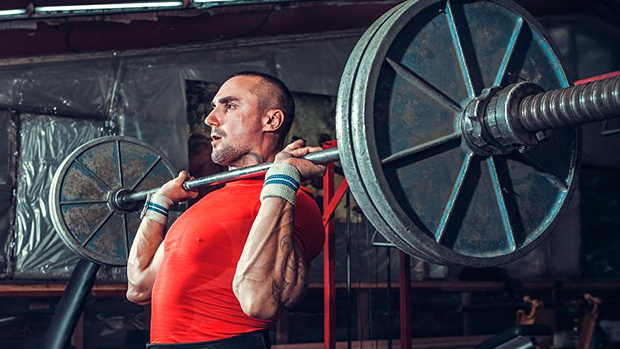When doing dips, too often lifters either try to stay excessively upright to target their triceps, or they lean over improperly to emphasize the chest by flexing and rounding the spine. Neither of these is ideal and places the shoulder joint into an internally rotated position. The hinge position allows the hips to set back, which tilts the torso over to an optimal 45-degree angle.
Once the torso is set to a moderate incline, the glenohumeral joint can centrate and lock in while allowing a natural unencumbered motion to occur throughout the shoulder joint. As you move into the bottom of a dip with a proper hip hinge, the elbows will be free to drive back toward the sides of the torso along the lats (similar to a neutral grip dumbbell chest press), rather than moving upwards toward the ears, which elevates the shoulder girdle.
One of the best dip variations to learn the hinge/torso tilt is weighted dips done with chains hanging around your upper traps and neck. The chains literally push the torso over, giving you the appropriate kinesthetic sense of what a proper torso tilt feels like.





